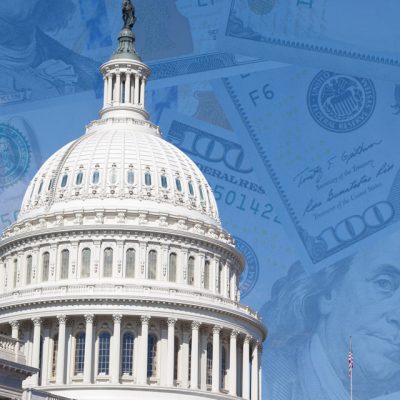Falcon
NOT FOR REPRINT
The 12 Wealthiest Countries in 2023
Slideshow October 03, 2024 at 01:24 PM
Share & Print
Global economies proved resilient and markets even boomed in 2023, despite sharp monetary tightening, according to Allianz's recently released 2024 Global Wealth Report. Global financial assets of private households increased by 7.6%, more than making up for the previous year's loss of 3.5%. Overall, total financial assets amounted to $263.8 trillion at year-end 2023. The research found that growth in the three major asset classes was uneven. Securities and insurance/pensions benefited from the stock market boom and higher rates, and grew significantly faster than the average of the last 10 years, by 22% and 6.2%. In contrast, growth in bank deposits fell to 4.6% after the pandemic-related boom years, recording one of the lowest increases in the last 20 years.
Broad-Based Recovery
Allianz's research showed that the 2023 recovery was broad based, with only New Zealand and Thailand recording negative growth rates. Moreover, growth was relatively uniform across all regions — the U.S. grew by 8.6%, faster than China's 8.2%. As a result, the growth advantage of the emerging economies over the advanced economies shrank again, to just two percentage points last year. "The comparatively weaker growth of poorer countries reflects the new reality of a fragmenting world," Ludovic Subran, chief economist of Allianz, said in a statement. "Until 2017, the year in which the trade disputes between the U.S. and China broke out, poorer countries still had a growth advantage of 10 percentage points or more over richer countries." Subran said everyone would pay a price for decoupling, but emerging economies most of all. "A less connected world is a more unequal world."Bank Deposits Slump
In 2023, savings declined to roughly pre-pandemic levels, falling by 19.3% to $3.3 trillion. This decline was almost exclusively attributable to bank deposits, according to the report. On balance, banks worldwide received only $21 billion, a slump of 98%. U.S. households liquidated deposits worth $717.9 billion. Meanwhile, flows into securities increased again last year, by 10%. The report noted, however, that a notable change of favorites within this asset class took place. While shares were sold on balance in many markets, savers made strong gains in bonds, thanks to the turnaround in interest rates. Insurance and pensions also proved to be relatively robust, with the decline in fresh savings worldwide amounting to just 4.9%.Expected Restraint
Financial assets shrugged off the interest rate turnaround in 2023, but it had a clear effect on the liabilities side of private households' balance sheets, according to Allianz. Growth in private debt weakened further to 4.1% worldwide, the lowest in nine years. Overall, private households' liabilities globally amounted to $63 trillion at the end of 2023. The decline in debt growth was evident in nearly all regions in 2023. It was particularly pronounced in North America and Western Europe, where debt growth more than halved to 2.9% and 1.1%. As nominal growth in global economic activity remained elevated by inflation, the global debt ratio (liabilities as a percentage of GDP) fell for the third year in a row, dropping by 1.5 points to 65.4%. This was also more than three points lower than 20 years ago, according to the report.A Setback for Real Estate
The other asset class that took a blow from rising interest rates was real estate, which recorded the lowest growth in 10 years. It advanced by only 1.8%, and in Western Europe, it fell by 2.2%. Allianz noted, however, that real estate growth rates in the past have lagged in most markets behind those of financial assets. In North America, for example, the annual gap was almost one percentage point over the last two decades, reflecting the fact that long-run capital gains for real estate are lower than those for equities. The future is likely to be even more challenging, given the increasing effect of climate change on real estate assets, Allianz said. Although natural catastrophes dominate the headlines, the costs of the transition to climate-friendly buildings — so-called transitions risks — will have the bigger effect in the long run. Projections of the House Price Index (HPI) under different climate scenarios up to 2050 show declines of 20% or more for many markets. For all markets under consideration, the value of real estate could be $33 trillion lower. "In future, housing prices are set to be defined equally by location and by energy efficiency," Hazem Krichene, the report's co-author, said in the statement. "But while higher physical risks are unavoidable, transitions risks are not: they are the results of policy decisions." Krichene pointed to Australia, whose ambitious climate policy could lead to a sharp decline in energy consumption, minimizing the effect on housing prices. "The potential big losses in other markets are a clear call for an efficient and effective climate policy. It's still not too late." See the gallery for the 12 richest countries, as defined by net financial assets per capita, according to Allianz. We converted euros to dollars using current exchange rates.NOT FOR REPRINT
© Touchpoint Markets, All Rights Reserved. Request academic re-use from www.copyright.com. All other uses, submit a request to [email protected]. For more inforrmation visit Asset & Logo Licensing.
Featured Resources
View All
Sponsored by Axos Advisor Services
Integrated Banking Solutions: How To Enhance Client Services and Grow Your Business

Sponsored by Optifino
Three Macro Trends Impacting Long-Term Care: Trends, Solutions & Client Conversations

Sponsored by Vanilla
The Missing Piece: Why Advisors Who Skip Estate Planning are Failing Their Clients






